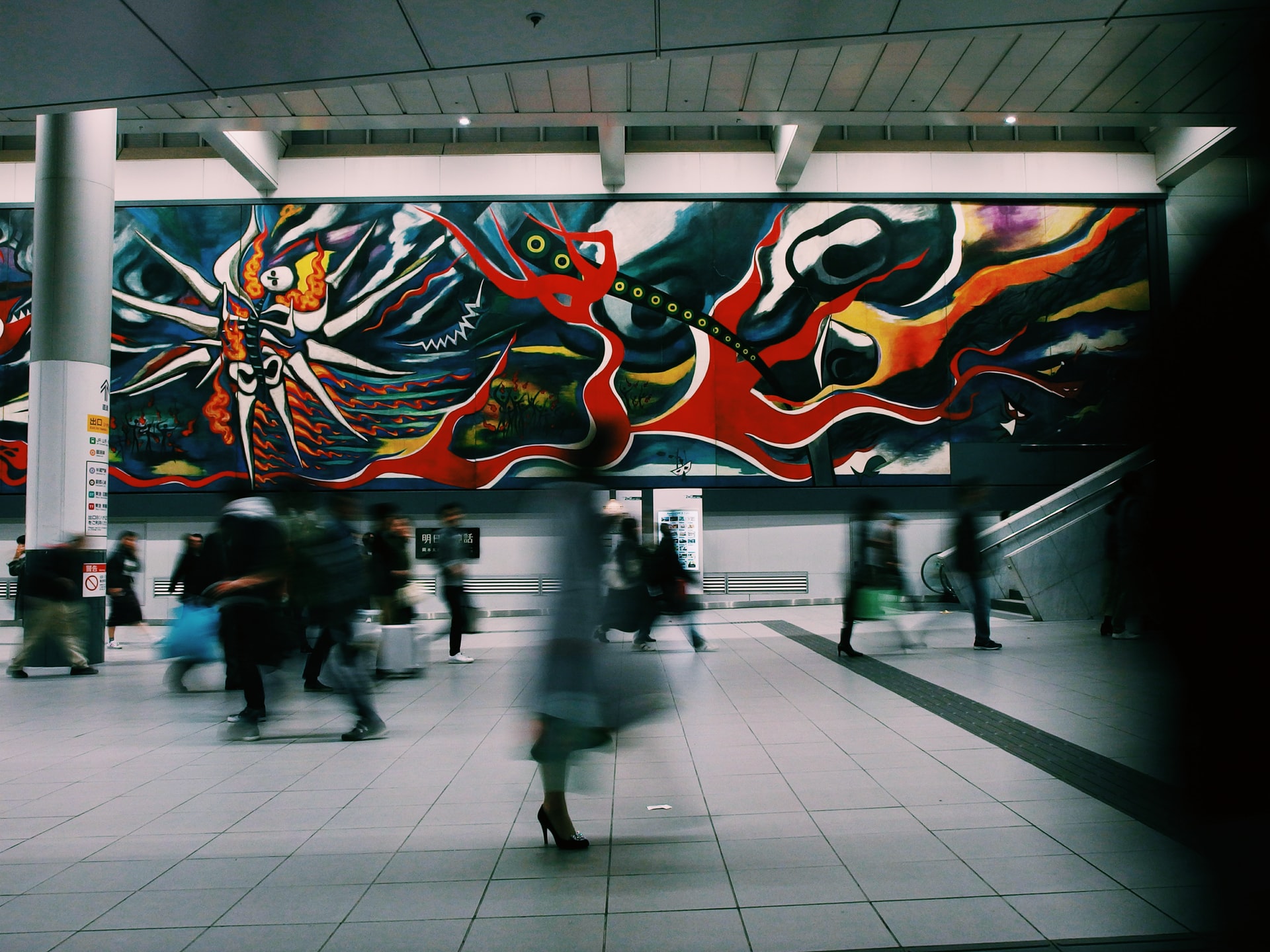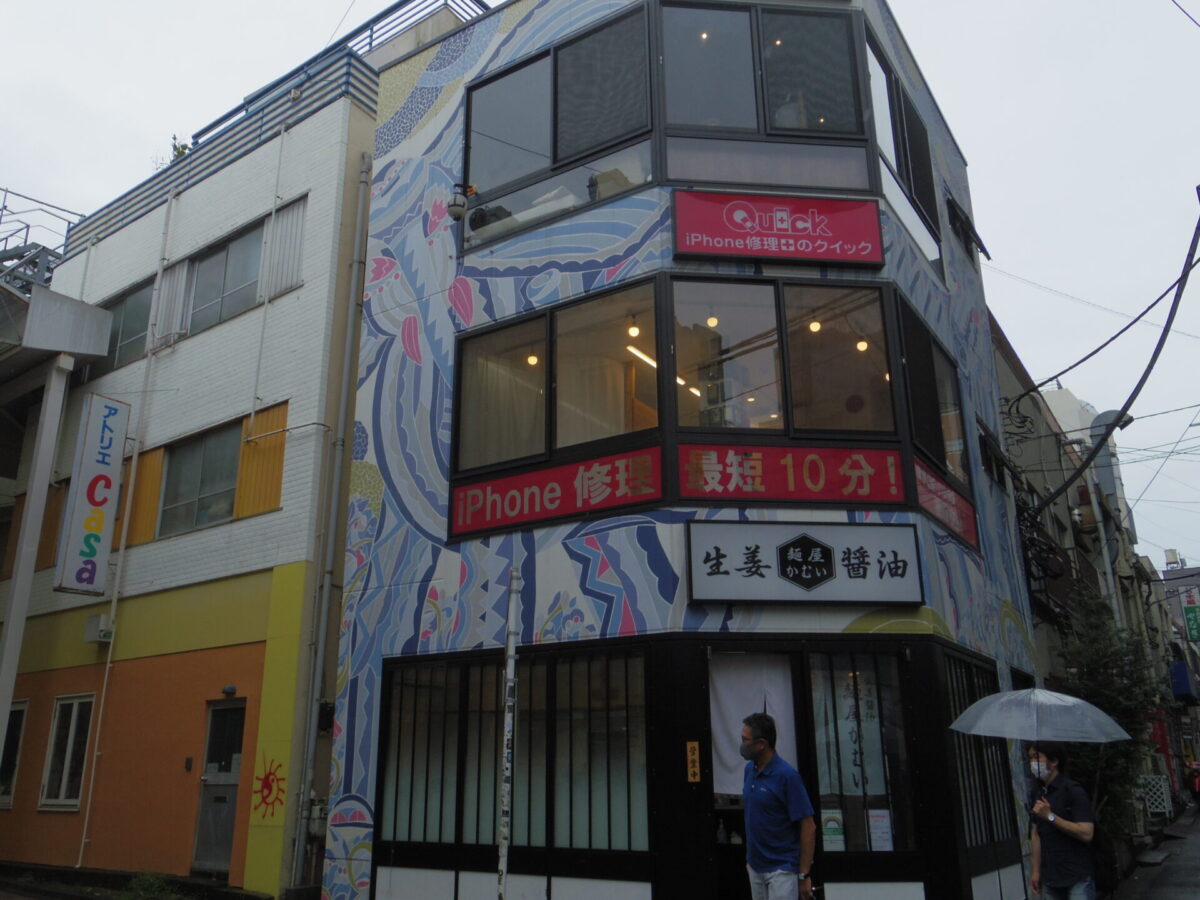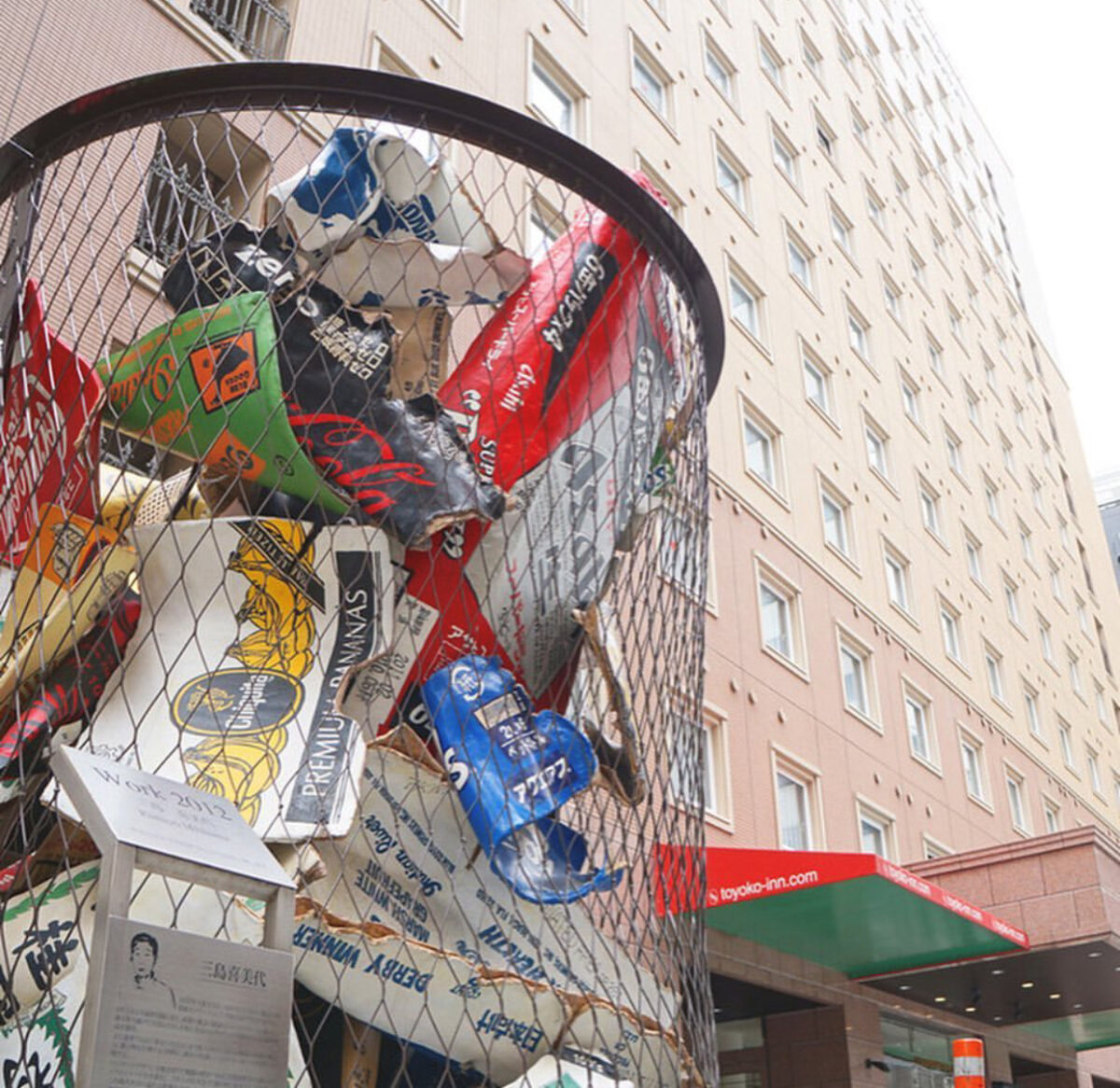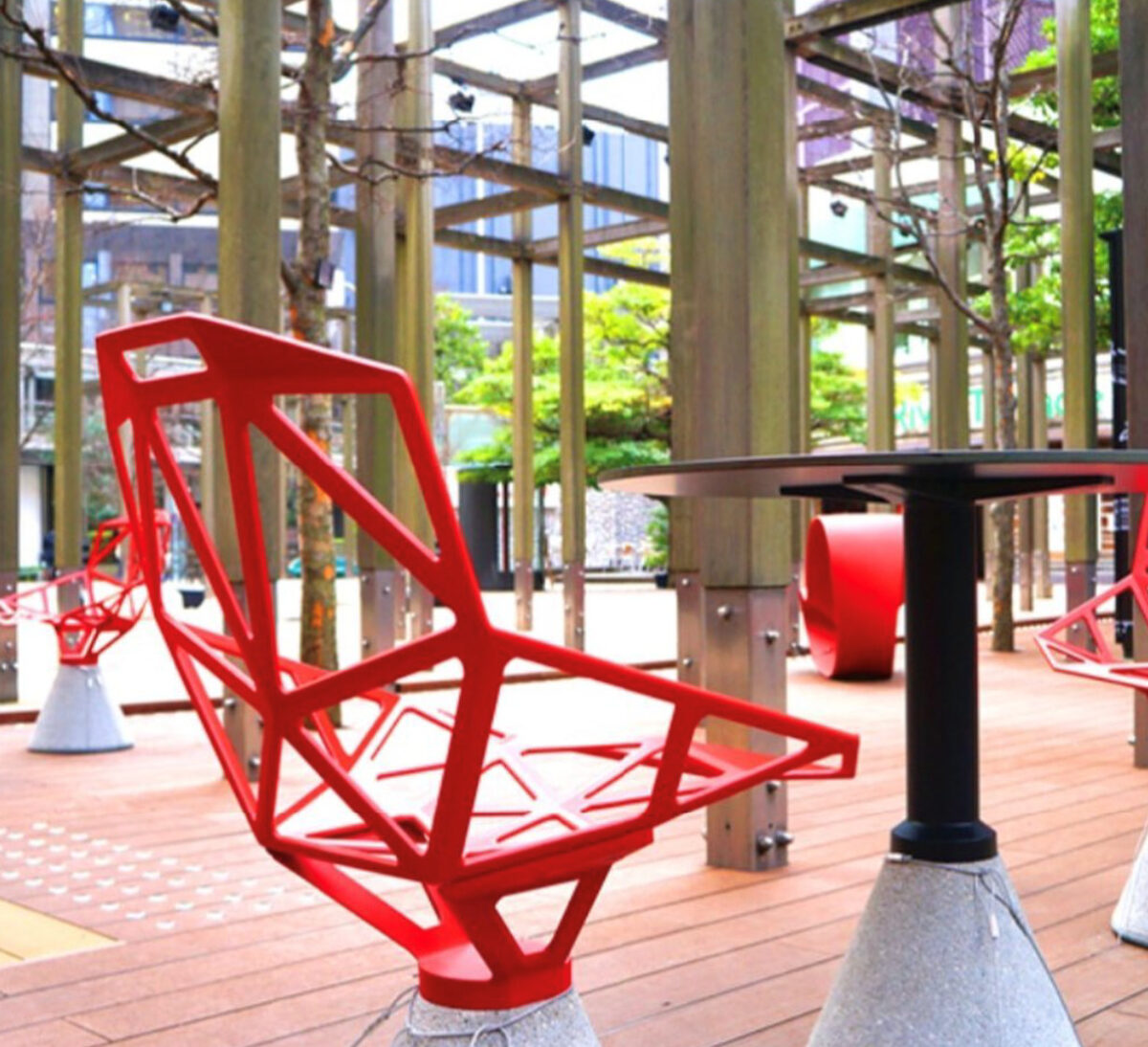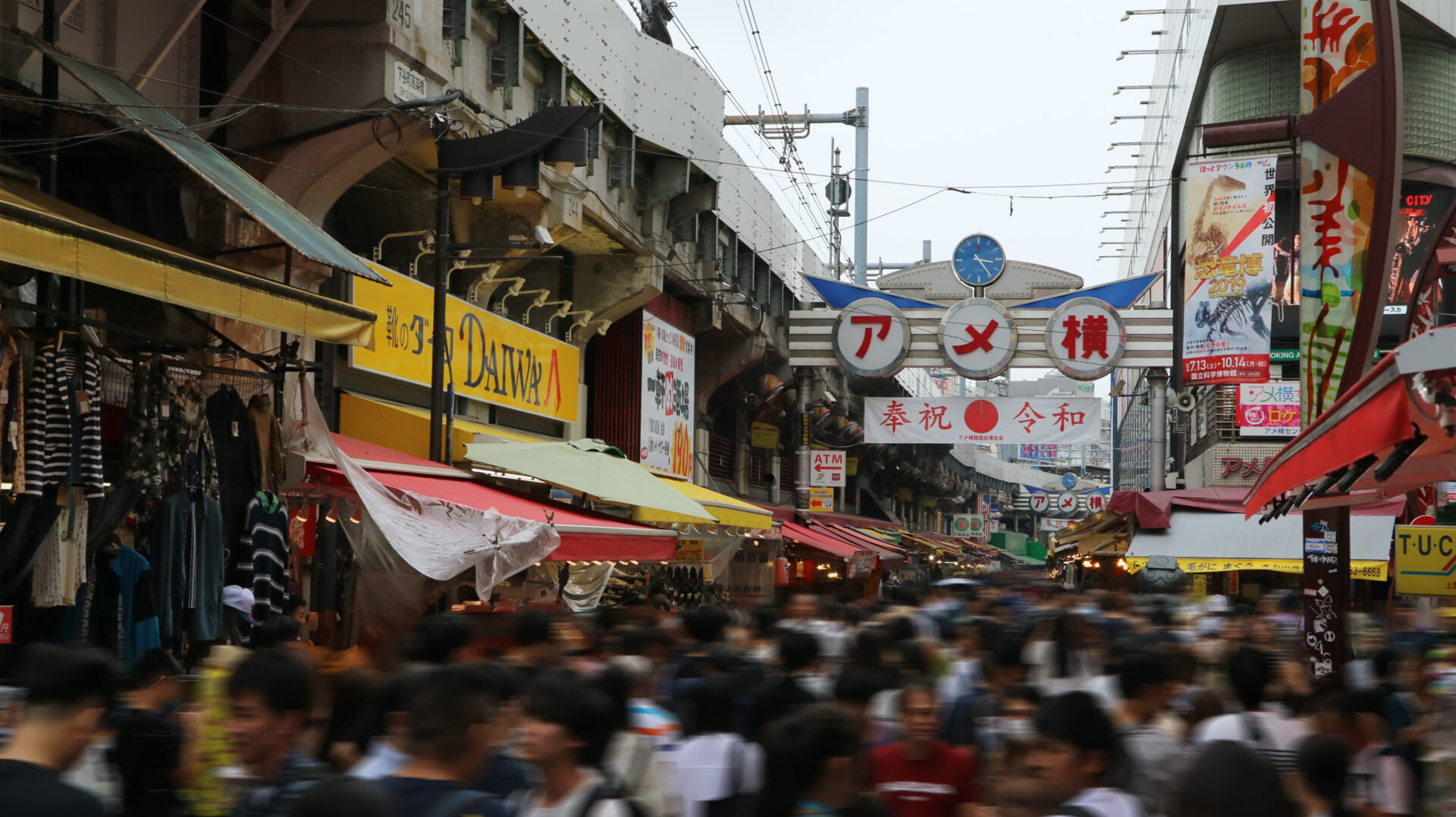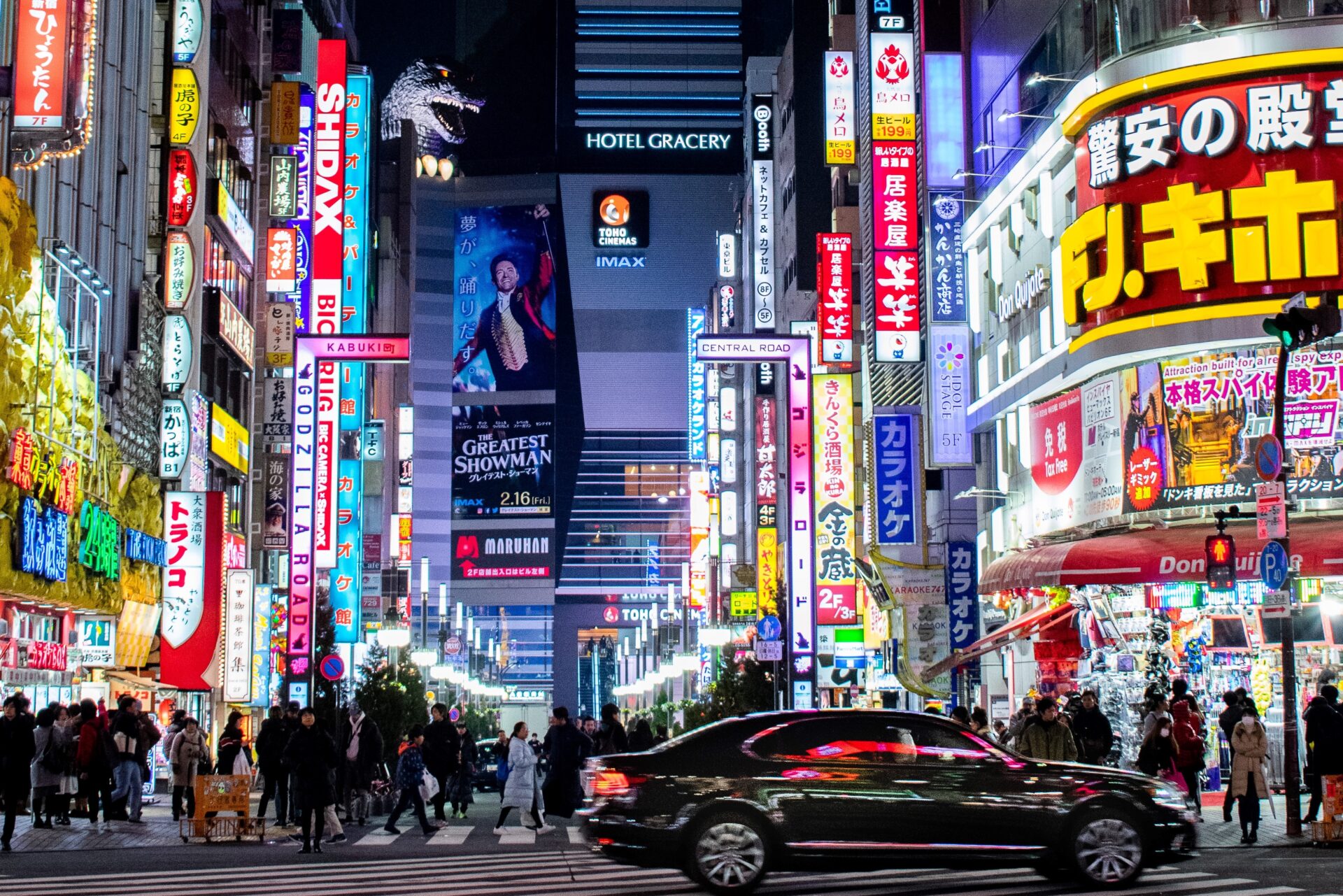When you walk around in Tokyo, there is much to see wherever you look. Modern architecture is interspersed with sudden relics from the past, and depending on which area you are in you can still see old wooden constructions in areas like Yanesen while neighborhoods like Shibuya and Shinjuku are places of cyberpunkish beauty. But that is not all, as Tokyo is also a treasure trove of public art works. For those who look, there is a whole world of street art to discover. Let us take you to some of the best public art in Tokyo!
Koenji Mural City Project
Koenji is located on the residential western side of the world’s largest metropolis, and among locals it is known as a local neighborhood with a hip and artsy vibe. Its status as a creative hub got a boost when the Mural City Project started in 2016. Seven street artists have lent their talents to make the area a whole lot more colorful with beautiful murals that are spread throughout the neighborhood. The artworks are vivid and lively, and they were created with various inspirational sources such as old Japanese folk stories or trips around the world.
Tennoz Isle Contemporary Street Art
WIth a history as one of Edo’s defence batteries and subsequently as an area of warehouses, Tennoz Isle used to be a rather grey and unpretty place. In the 1980s, however, a movement of development started that slowly turned the isle into a space where people can come to work, relax, and be entertained in a stimulating environment. Old structures were thankfully not all razed, and some of the warehouses were repurposed as office and restaurant space and as an art gallery. To further brighten up the area, street art installations were created and an Art Walk was born. Three contemporary works called 2005 Sasayaki, Work 2012, and Tap are located within a 5-minute walk from one another. The TERRADA Harbor One Building nearby is also very much worth a visit for those who are interested in original Japanese art supplies.
Official website of the Tennoz Isle Art Walk
The Myth of Tomorrow Mural in Shibuya
Of course, most people come to Shibuya to experience the busy scramble crossing, go shopping, and see the statue and mural of loyal dog Hachiko. But most visitors don’t know about another interesting mural that is a bit hidden away in Shibuya Station. When you walk through the pedestrian overpass between the JR Yamanote line and the Keio Inokashira line, you will see a slightly ominous-looking 30-meter long mural on the wall. Surrealist artist Okamoto Taro made this artwork called ‘The Myth of Tomorrow’ in the 1960s with atomic warfare as its theme. After having been lost for decades, the artwork was found again, repaired, and installed in Shibuya in 2008.
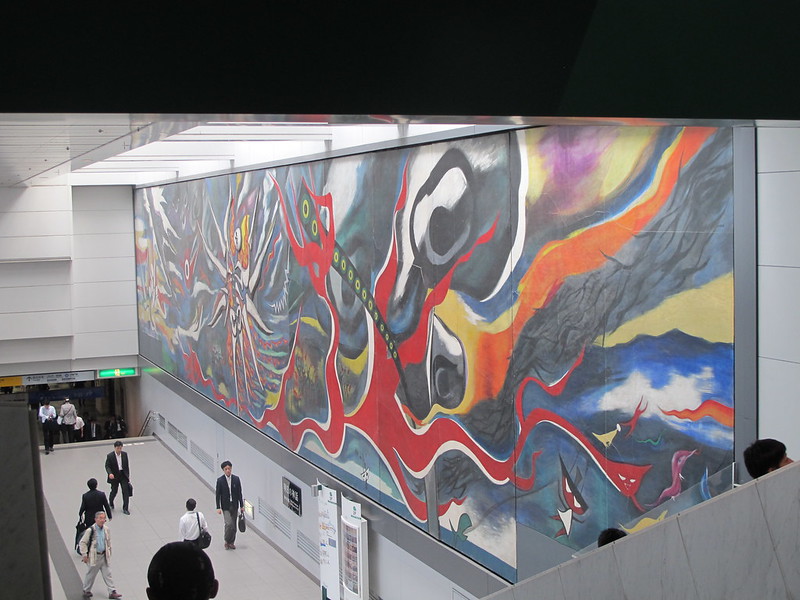
Roppongi’s Large Spider
Roppongi is one of Tokyo’s cultural centers with the wonderful Mori Art Museum at its creative heart. On Roppongi’s busy streets you can find multiple works of public art. Look out for the child robots of Sakurazaka Park, the Kin no Kokoro golden heart in the Mohri pond, the ‘chair that disappears in the rain’ along Keyakizakadori, the Rose in 66 Plaza, and many more. Giant spider Maman by French artist Bourgeois deserves a special mention as the most famous work of street art in Roppongi. You can’t miss this more than 9-meter tall statue in Roppongi Hills that symbolizes the positive emotions of nurture, protection, and the weaving of new information, in spite of its slightly terrifying sight.
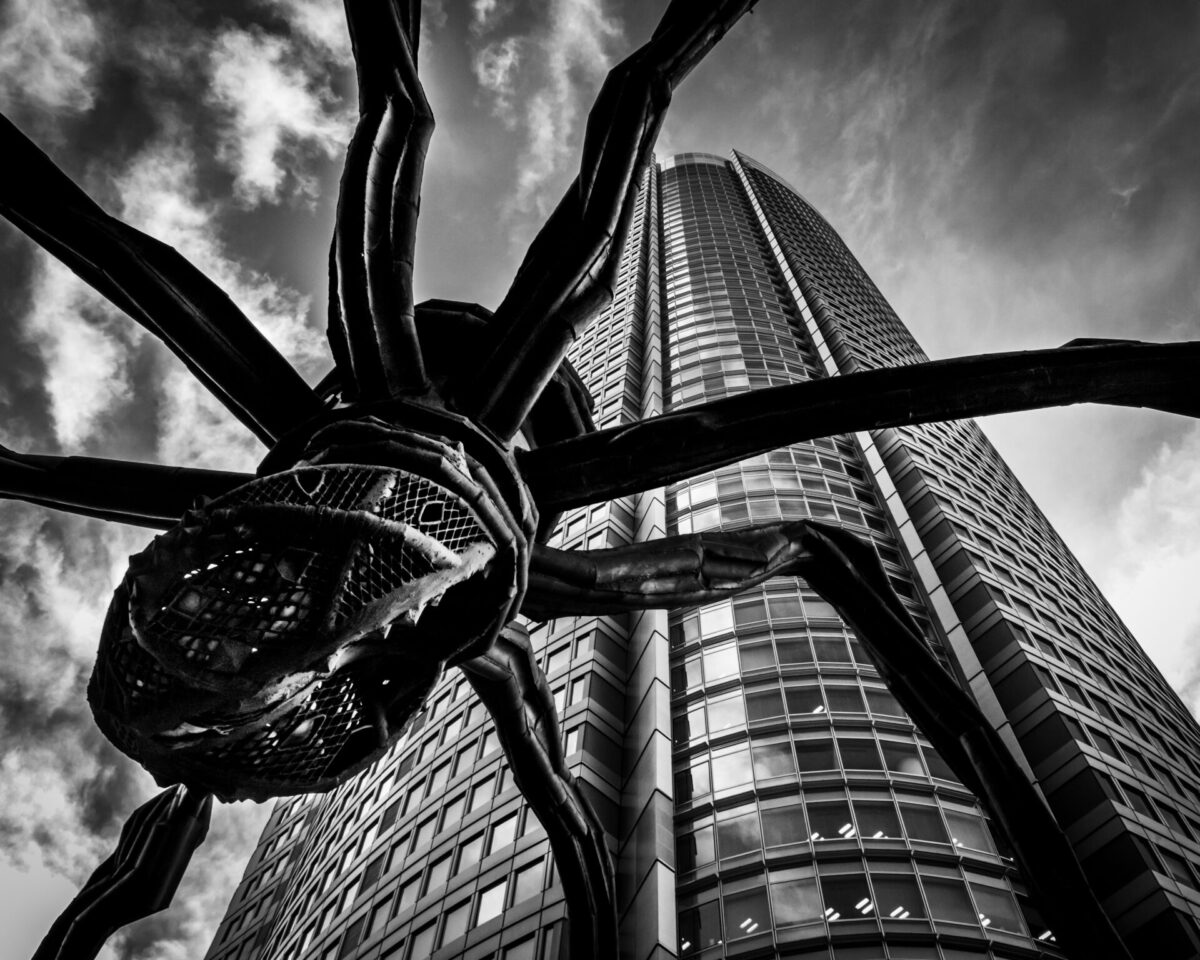
Landmark Public Art in Shinjuku
As Tokyo’s main night-time entertainment district, Shinjuku gets plenty of foot traffic every day and night. It is also a popular neighborhood to visit for tourists, who love to take pictures of the hustle and bustle while they are there. So it is no wonder that Tokyo’s version of Robert Indiana’s Love statue, which can be found in several large cities around the world, is located in Shinjuku. The red statue is a popular picture spot for couples and friends, and it is located in front of a building called Shinjuku i-LAND near Nishi Shinjuku Station. Another popular public art work is The Eye of Shinjuku, which has been sitting on a wall of the Shinjuku Station West Exit Underground Plaza since 1969 and has since become a symbol of modern Shinjuku. Artist Yoshiko Miyashita says that the colorful and moving eye looks at everything that flows in the modern world. Some people think it is a bit creepy, which gave rise to urban legends that say that a door near the eye leads to a secret room.
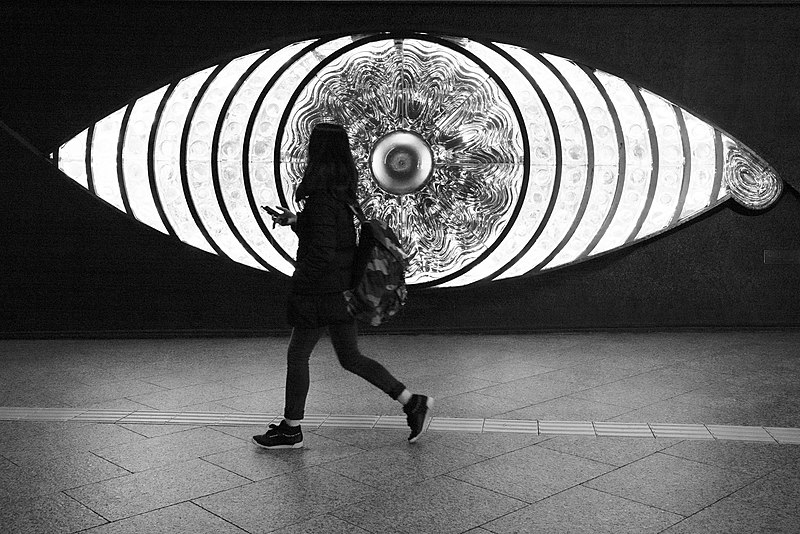
A Mysterious Cloud in Kasumigaseki
Kasumigaseki is not usually a neighborhood you would visit just for fun, as it is a rather boring district with many impersonal office buildings. It is where the government of Japan is seated, and there isn’t much else to do. There is, however, one good reason to make a quick stop in this otherwise boring part of Tokyo; a work called Cloud by contemporary Argentinian artist Leandro Erlich. Best visited at night when it looks most mysterious, this seemingly floating cloud in a box looks fascinating to even those who aren’t especially fond of modern art. It can be seen in the covered area in front of the Iino Building.
Toranomon
If you are going to Kasumigaseki to see the Cloud, you can just as well also stop by nearby Toranomon, a bustling business district with many nice local restaurants. The Mori Art Museum supervises a 10-meter large sculpture that is seated in the Oval Plaza garden by artist Jaume Plensa. He is famous for works that have a deep conceptual meaning, and this work in Tokyo, which is called Roots, is no different. The statue that consists of many winding lines represents 2 human figures standing close together, and it symbolizes the bonds that tie humanity together and the new cultures that emerge around Toranomon area now the area has been redeveloped.
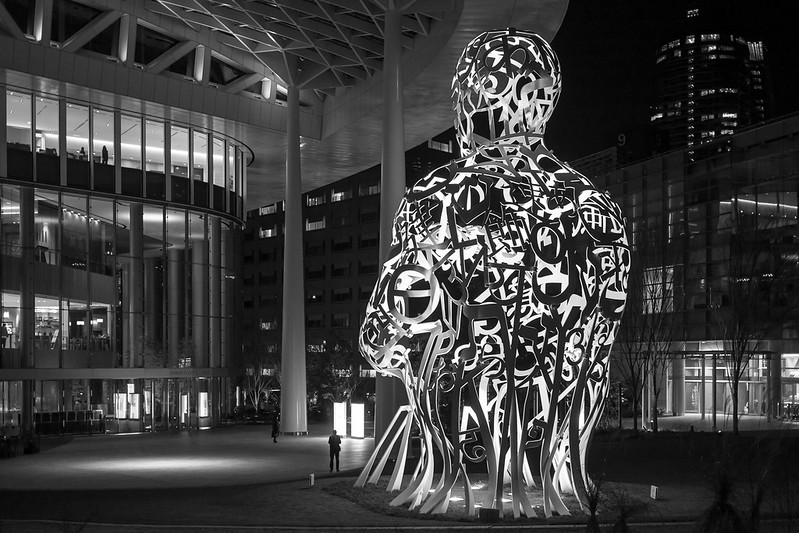
Kioicho
Not far from the New Otani Hotel, which is located in the very middle of central Tokyo, you can see the new luxury development Tokyo Garden Terrace Kioicho. In the foreground, the beautiful former residence of Yi Un, who was a Korean prince and an army general of the Japanese Imperial army, is still standing. There are several public art objects around the area with the White Deer by Kohei Nawa as one of the most outstanding works. It was inspired by deer, who are regarded as sacred animals in Japan for being messengers of the Shinto gods.
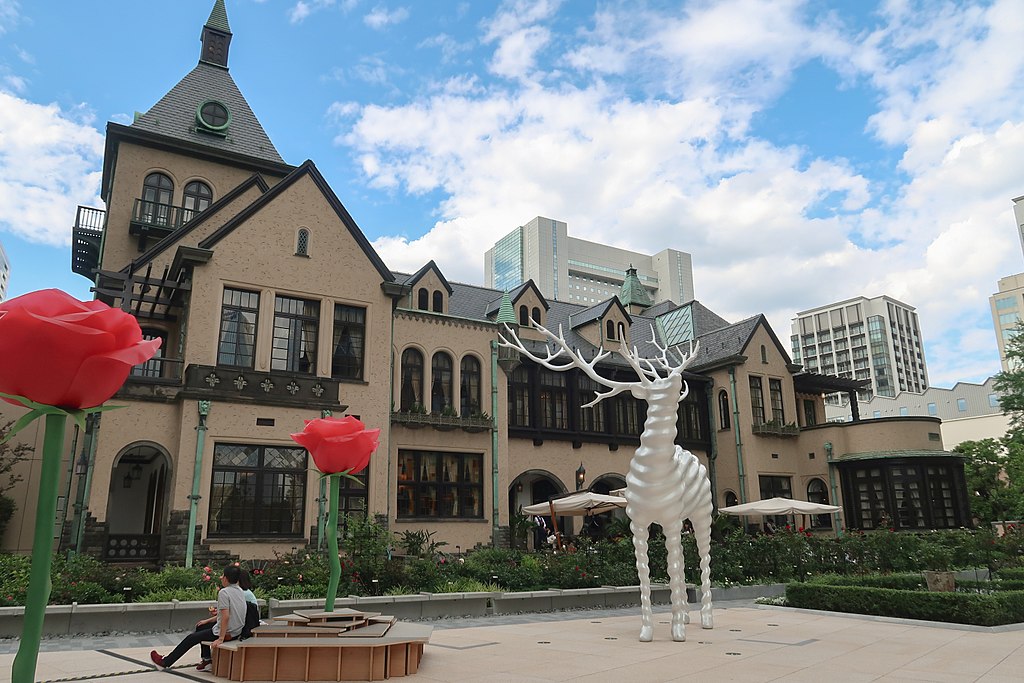
Tachikawa Art in Public
For this one you will have to travel a bit further from central Tokyo, as Tachikawa is located around 30 kilometer west of Shinjuku. The convenient JR Chuo line, however, makes it an easy 24-minute direct ride to Tachikawa station if you take the train. Art project FARET Tachikawa is only a short walk from the station. There are 109 works of 92 artists displayed in and around buildings that contain a hotel, a department store, a library, and offices. A lot of art works are not just art but also useful objects for the space such as benches, ventilation ports, and streetlights.

Official website of FARET Tachikawa
Art Tours in Tokyo
While it can be fun to go in search of public art in Tokyo by yourself, especially if you are new to the city and not in the know about art in Japan, it can be rewarding to book a private guide. As private tours can be customized to fit your interests, the guide can build an itinerary around your personal interest in art and architecture if so desired. We offer half-day and full-day customized tours in Tokyo. If you let us know upon booking about your interest in art, we will match you with the best guide.
Follow us on Instagram, Facebook and Twitter for more travel inspiration. Or tag us to get featured!
Happy traveling!
Other articles you might be interested in

Stefanie Akkerman moved from the Netherlands to Japan in 2013 with her Japanese husband and son. She jumped into the niche of Dutch tour guiding in Tokyo and Kamakura in 2015 and occasionally writes articles about all the great sights and activities Japan has to offer. She loves (Japanese) food, and to work that all off she goes diving, snorkeling, cycling, or hiking.
This post contains some affiliate links. When you click through and make a purchase we may receive some commission, at no extra costs to you.
